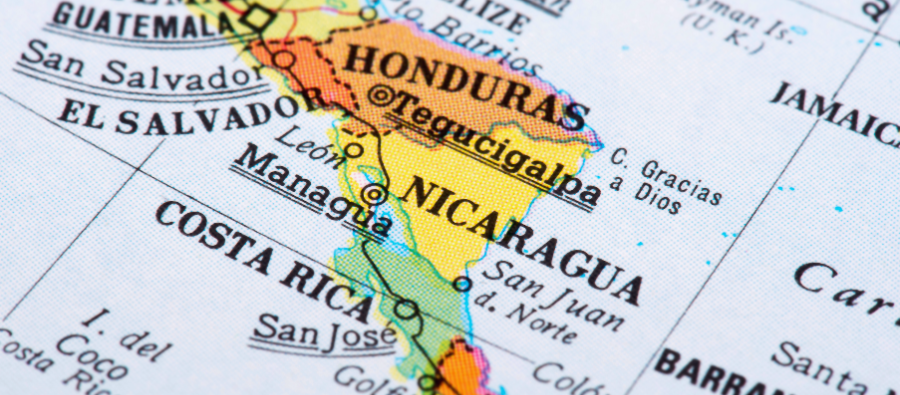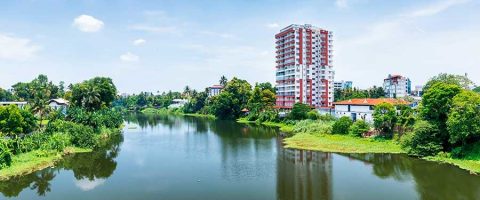A Week in the Life of a UAS Station Manager in Niamey: Our Station Manager in Cote D’Ivoire, Adama Sanogo describes a recent supervision mission that took him to Niamey, the capital of Niger.
Day 1 in Niamey
In early June, I traveled to Niger’s capital, Niamey on a mission to supervise two cargo flights. Disembarking from the aircraft at Niamey’s Diori Haamani International Airport (DRRN), I was greeted with extreme temperatures of 40-46 degrees Celsius. This isn’t unusual for Summer in Niger. In fact, it’s usually so hot that it’s become regular airport authority practice to pour water on the tarmac before the arrival and departure of each passenger flight to try to cool the tarmac for passenger disembarkation and boarding. Apparently, this is one of the factors that inspired Niger’s government to enter a partnership with a Turkish company called SUMMA to build and operate a new and modern terminal at the airport. The ultra-modern infrastructure includes a new taxiway and carpark, Presidential terminal, and ramp extension. The project is said to have cost a total of 105 Billion XOF.

Day 2 in Niamey
On the day of the first cargo flight, I reported to the airport two hours ahead of its arrival so I could brief the handling staff, carry out the usual visual equipment check, and perform the pre-arrival FOD CHECK. The flight arrived one hour late from Jeddah with all ground equipment and manpower positioned, ready, and awaiting its arrival. Such a delay is not unusual; however, we were about to be confronted with our first challenge of the day…
The loadmasters opened the cargo hold and the nose the aircraft to offload the cargo. This cargo turned out to be highly specialized and sensitive building equipment, specifically giant construction tower cranes which are oversized and could not be unloaded on the high loader. For the next 30 minutes, the loadmasters, handlers, and I got busy with some serious brainstorming looking for possible solutions. Finally, we decided to use a forklift simultaneously with the high loader so the forklift could support the extra length of the crane. This solution proved to work perfectly and allowed us to offload all the remaining cargo without any difficulty. Seven pallets measuring 20 foot and two smaller pallets were offloaded, the necessary paperwork was completed, the crew was remitted, and the flight departed with minimal delay.

However, we were about to encounter our second unforeseen challenge of the day! Just a few minutes after take-off, as I was making my way back to the handlers’ operations office to debrief, I received a call from the Control Tower to inform me that our cargo flight had to return to land as the Captain reported a technical issue with the left engine.
The return proved extremely challenging for the Captain as it took a total of three attempts before he landed successfully. Once the crew had disembarked, I was informed that the Captain requested HOTAC and crew transport because they had exceeded their legal working hours. The engineers prepared to stay and attempt to fix the aircraft’s engine while the rest of the crew needed to rest. It suddenly dawned on me that the day had just begun…
The priority was to secure accommodation for the crew. We settled on the 5-star Soluxe Hotel and I organized their ground transport. I covered these unplanned costs in cash as no previous arrangement was in place because the flight was originally supposed to leave the same day. I remained with the engineers until 2:00LT the next day when they finally detected what went wrong with the aircraft. They then placed an order for the spare part they required, and this was scheduled to come on the next cargo flight. I then escorted them to their hotel for a well-earned rest before returning to my hotel.
Day 5 in Niamey
The second flight finally arrived in Niamey after several reschedules, delivering the expected cargo as well as the spare parts needed by the engineers to fix the other aircraft. They had been eagerly awaiting this arrival and I ensured they’d been collected from their hotel in plenty of time so they could start the part replacement immediately.
Using the same offloading system devised for the previous flight, the handling staff succeeded in offloading the cargo with no delay and the aircraft returned on schedule. After a few hours, the first aircraft was fixed, and an engine test run was conducted and positively certified. Arrangements were then made to collect the crew from the hotel and transport them back to the airport. Thankfully for all. the flight finally departed without further issues.

I was relieved but the unforeseen delays presented me with another challenge… I was booked to depart Niamey that afternoon for my base in Abidjan. However, because of the complications with the cargo flight, I was left too short on time to catch my flight. Our Africa team had to handle the last-minute extension of my stay until the following day. Unfortunately, the next flight to Abidjan the next day was full, and this meant I had to stay two extra nights away from home… At least I finally had some time to rest, something I hadn’t been able to do since this mission began.
Day 7 in Niamey
After seven days, I was able to return to the Ivory Coast. The extra days I spent in Niamey did afford me the opportunity to meet with some vendors, as well as the opportunity to witness the commissioning ceremony of the new airport terminal on June 11, for which many government officials, diplomats, and the President of Niger were in attendance. I enjoyed the rare experience of entering Niamey through the old terminal and departing through the brand-new terminal. This seemed fitting for a mission to Niger, a hospitable and friendly country that has modernized hugely in recent times.

Need the support of a UAS Station Manager? Contact UAS for details.





